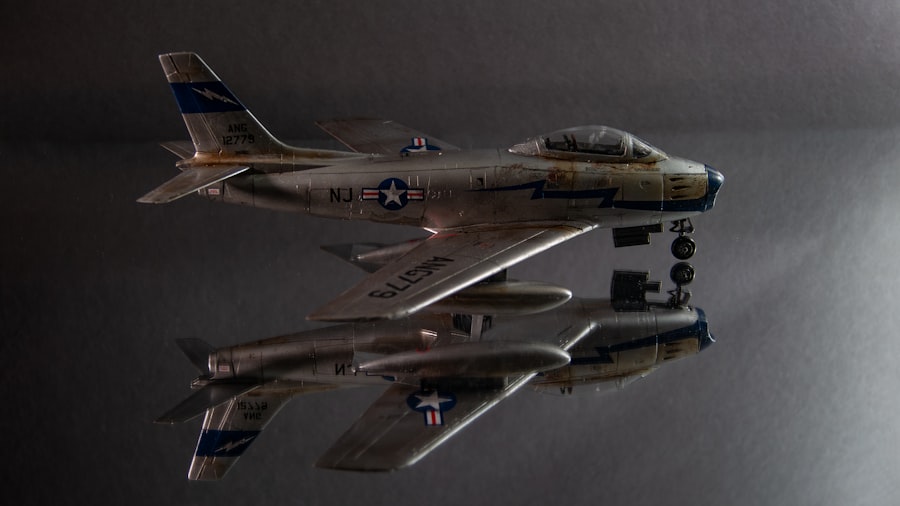The F-14 Tomcat, a twin-engine, variable-sweep wing fighter aircraft, has become an iconic symbol of naval aviation since its introduction in the 1970s. Developed by Grumman Aircraft Engineering Corporation, the F-14 was designed to serve as a fleet defense interceptor for the United States Navy, capable of engaging enemy aircraft at long ranges while also possessing the versatility to perform ground attack missions. Its distinctive design, characterized by its variable-sweep wings that could be adjusted in flight, allowed the F-14 to excel in various roles, making it a formidable presence in the skies.
The F-14’s operational history is marked by its deployment in numerous conflicts and its role in maintaining air superiority during the Cold War. With its advanced avionics and weapon systems, the Tomcat was not only a technological marvel of its time but also a critical asset for U.S. naval forces.
The aircraft’s ability to operate from aircraft carriers and its impressive performance capabilities solidified its reputation as one of the most effective fighter jets in military history. As we delve deeper into the F-14’s development, combat history, and cultural significance, it becomes clear that this aircraft has left an indelible mark on both aviation and military strategy.
Key Takeaways
- The F14 Tomcat was a supersonic, twin-engine, two-seat, variable-sweep wing fighter aircraft developed for the United States Navy.
- The development and design of the F14 Tomcat was a response to the need for a new fleet defense fighter to counter potential threats in the 1970s and beyond.
- The F14 Tomcat saw combat in various conflicts, including the Gulf of Sidra incident and Operation Desert Storm, showcasing its versatility and effectiveness in air combat.
- Notable features and capabilities of the F14 Tomcat included its variable-sweep wings, powerful radar and avionics, and the ability to carry a wide range of air-to-air and air-to-ground weapons.
- The F14 Tomcat has left a lasting impact on popular culture, being featured in numerous films, TV shows, and video games, cementing its status as an iconic aircraft.
Development and Design of the F14 Tomcat
The genesis of the F-14 Tomcat can be traced back to the late 1950s when the U.S. Navy recognized the need for a new air superiority fighter to counter emerging threats from Soviet bombers and fighters. The Navy’s requirement for a versatile aircraft that could perform both fleet defense and ground attack missions led to the establishment of the Tactical Fighter Experimental (TFX) program.
Grumman’s design proposal was selected in 1968, leading to the development of what would become the F-14. The design of the F-14 was revolutionary for its time, featuring variable-sweep wings that allowed for optimal aerodynamic performance across a range of speeds and flight conditions. This capability enabled the aircraft to take off and land on aircraft carriers while also achieving high speeds during combat.
The F-14 was powered by two Pratt & Whitney TF30 engines, which provided significant thrust and allowed for impressive maneuverability. Additionally, the aircraft was equipped with advanced avionics, including a sophisticated radar system capable of tracking multiple targets simultaneously, enhancing its combat effectiveness.
The F14 Tomcat in Combat

The F-14 Tomcat first saw combat during the Iranian Revolution in 1979 when it was deployed to protect U.S. interests in the region. Its operational debut showcased its capabilities against various threats, including air-to-air engagements with Iranian aircraft.
The Tomcat’s performance was further highlighted during the Gulf War in 1991, where it played a crucial role in establishing air superiority over Iraq. The aircraft’s ability to engage enemy fighters at long ranges using its AIM-54 Phoenix missiles proved instrumental in neutralizing threats before they could reach U.S. forces.
Throughout its service life, the F-14 participated in numerous conflicts, including operations in Bosnia, Kosovo, and Afghanistan. Its versatility allowed it to adapt to different combat scenarios, whether intercepting hostile aircraft or providing close air support for ground troops. The Tomcat’s reputation as a reliable and effective fighter was solidified through these engagements, where it consistently demonstrated its ability to outmaneuver adversaries and deliver precision strikes.
Notable Features and Capabilities of the F14 Tomcat
| Feature/Capability | Description |
|---|---|
| Variable-Sweep Wings | The F14 Tomcat has variable-sweep wings, allowing it to adjust its wing configuration for different flight conditions. |
| Phoenix Missile System | It is equipped with the Phoenix missile system, which allows it to engage multiple targets at long ranges. |
| AWG-9 Radar | The F14 features the powerful AWG-9 radar system, providing long-range detection and tracking capabilities. |
| Supersonic Speed | Capable of reaching supersonic speeds, the F14 Tomcat is a high-performance fighter jet. |
| Carrier-Based Operations | Designed for carrier-based operations, the F14 has the ability to take off and land on aircraft carriers. |
One of the most notable features of the F-14 Tomcat is its variable-sweep wing design, which allows pilots to adjust the angle of the wings during flight. This feature enhances aerodynamic efficiency, enabling the aircraft to achieve optimal performance at both low and high speeds. When flying at slower speeds during takeoff and landing, the wings can be swept back to improve lift; conversely, they can be extended for high-speed flight and combat maneuvers.
The F-14 is also renowned for its advanced weaponry systems. It was primarily armed with the AIM-54 Phoenix missile, which had a long-range capability that allowed it to engage enemy aircraft from distances exceeding 100 miles. This missile system was complemented by shorter-range air-to-air missiles such as the AIM-7 Sparrow and AIM-9 Sidewinder, providing pilots with a versatile arsenal for various combat scenarios.
Additionally, the F-14 could carry precision-guided munitions for ground attack missions, further enhancing its multi-role capabilities.
The F14 Tomcat in Popular Culture
The F-14 Tomcat has transcended its military origins to become a cultural icon, particularly through its portrayal in films and television shows. Perhaps most famously, it gained widespread recognition through its role in the 1986 blockbuster film “Top Gun,” where it was featured prominently as the primary aircraft flown by elite naval aviators. The film not only showcased the Tomcat’s impressive aerial maneuvers but also contributed to a surge of interest in naval aviation among the general public.
Beyond “Top Gun,” the F-14 has appeared in various other media forms, including video games, documentaries, and literature. Its sleek design and formidable presence have made it a favorite subject for aviation enthusiasts and filmmakers alike. The aircraft’s legacy continues to resonate with audiences today, serving as a symbol of American military prowess and innovation during a pivotal era in aviation history.
Legacy of the F14 Tomcat in Aviation

The legacy of the F-14 Tomcat extends far beyond its operational history; it has influenced subsequent generations of fighter aircraft design and naval aviation strategy. Its variable-sweep wing technology paved the way for advancements in aerodynamics and performance optimization in modern fighter jets. The lessons learned from the F-14’s development and deployment have informed design philosophies for newer aircraft such as the F/A-18 Super Hornet and even stealth fighters like the F-35 Lightning
Moreover, the F-14’s role in establishing air superiority during critical conflicts has shaped military doctrine regarding fleet defense and air-to-air combat. Its success in various combat scenarios has provided valuable insights into tactics and strategies that continue to be relevant today. The aircraft’s ability to adapt to changing threats and mission requirements has set a standard for versatility that remains a key consideration in modern military aviation.
Retirement and Successors of the F14 Tomcat
As technology advanced and new threats emerged, the U.S. Navy began transitioning away from the F-14 Tomcat in favor of more modern platforms. The decision to retire the Tomcat was influenced by several factors, including rising maintenance costs and advancements in avionics and weaponry that made newer aircraft more capable.
The last operational F-14s were retired from service in 2006, marking the end of an era for this legendary fighter. The primary successor to the F-14 was the F/A-18 Super Hornet, which offered enhanced capabilities while maintaining carrier compatibility. The Super Hornet incorporated many lessons learned from the F-14’s operational history while providing improved avionics, fuel efficiency, and multirole capabilities.
Additionally, advancements in unmanned aerial vehicles (UAVs) have begun to play a significant role in naval operations, further shaping the future of carrier-based aviation.
The Enduring Impact of the F14 Tomcat
The impact of the F-14 Tomcat on aviation history is profound and enduring. Its innovative design, remarkable performance capabilities, and storied combat history have solidified its place as one of the most iconic fighter jets ever built. While it may no longer be in active service, its legacy continues to influence modern military aviation and inspire future generations of aviators and engineers.
As we reflect on the contributions of the F-14 Tomcat to naval aviation and military strategy, it is clear that this remarkable aircraft will always hold a special place in both history and popular culture. Its story is one of innovation, adaptability, and excellence—qualities that will continue to resonate within the realms of aviation for years to come.


